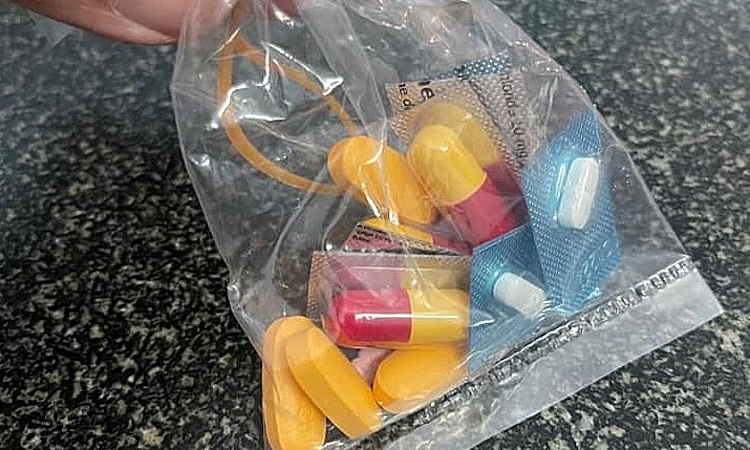After describing her rash to a shopkeeper, the woman was given a pre-packaged assortment of unidentified "red and green" pills in a plastic bag. 30 minutes after taking the first dose, she experienced stomach pain, nausea, chest tightness, shortness of breath, facial itching, abdominal swelling, and widespread skin redness. Her condition worsened rapidly, and her family rushed her to a hospital in Tuyen Quang province in early September. Doctors diagnosed her with anaphylactic shock, a severe allergic reaction that can be fatal. After intensive treatment, she survived the crisis.
This woman's serious reaction to self-prescribed medication is not an isolated incident. A 59-year-old man from Nam Tu Liem district in Hanoi experienced coughing, a runny nose, headaches, and fatigue. Assuming it was a common cold due to the change of seasons, he went to a nearby pharmacy. Describing his symptoms, he received a "combo" of flu medication, antibiotics, anti-inflammatory drugs, and supplements in an unlabeled plastic bag. The pharmacist instructed him to take 2 to 3 packets daily for 7 days.
By the 5th day, his symptoms had subsided, but he suddenly experienced severe stomach pain, vomiting, and cyanosis. His family rushed him to the University Medical Center, where doctors diagnosed acute gastritis, likely caused by the corticosteroid in the cold and flu "combo." His pre-existing peptic ulcer exacerbated the situation.
Dr. Nguyen Huy Hoang of the Vietnam High Pressure Oxygen Medicine Association notes that amidst an overburdened healthcare system and rising antibiotic resistance, self-medicating with prescription drugs without a doctor's diagnosis has become a widespread societal issue. Pharmacies have become the first point of contact for many seeking treatment due to the cost and time involved in visiting hospitals, while buying drugs directly is perceived as faster and cheaper. This habit facilitates the entry of unregulated and even counterfeit drugs into the market.
 |
A bag of unidentified red and green pills. Photo provided by a doctor |
A bag of unidentified red and green pills. Photo provided by a doctor
Even more alarming is the practice of pharmacists diagnosing and prescribing medication without medical training, posing significant risks. These "red and green" pills not only cause side effects but can also mask symptoms, delaying proper treatment. For instance, appendicitis pain might be mistaken for indigestion, leading to the use of pain relievers while crucial time for surgery is lost.
Medical experts also warn that corticosteroid misuse can lead to serious complications, including stomach ulcers, osteoporosis, cataracts, high blood pressure, diabetes, and adrenal insufficiency.
Similarly, Dr. Nguyen Lan Hieu, Director of Hanoi University Medical Center, emphasizes the dangers of self-medication. He cites a case of a patient with a sore throat who bought a 50,000 VND packet of red and green pills. The packet contained two Cephalosporin antibiotics and several other red and yellow pills that were unidentifiable due to the lack of names or dosages. There were no instructions or a receipt.
"Doctors are not allowed to prescribe two antibiotics from the same group in one prescription. If antibiotic combinations are necessary, they must be from different groups that have synergistic effects," he explains.
Antibiotic overuse has made Vietnam one of the countries with the highest rates of antibiotic resistance globally. According to a 2022 study by the Woolcock Institute of Medical Research and the National Institute of Hygiene and Epidemiology, one-third of antibiotic use in Vietnam is considered inappropriate, leading to drug resistance.
When bacteria become resistant, antibiotics lose their effectiveness, directly threatening patients' lives. Therefore, doctors urge people to be vigilant, avoid purchasing medication from unknown sources or without instructions. If unsure, consult a doctor to understand the dosage and potential side effects.
Thuy Quynh












